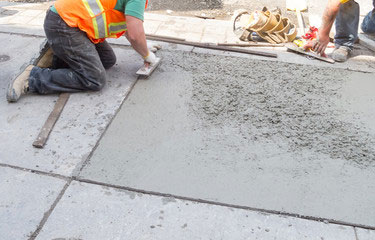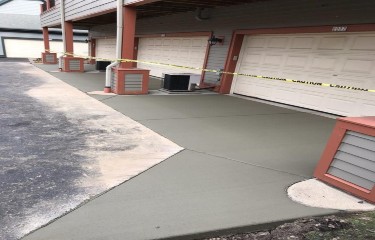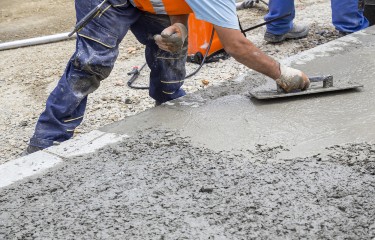
CONTACT US TODAY!



There are certain conditions under which using a repair compound or resurfacing product may result in only a short-term fix. Under these conditions, patching the concrete prior to resurfacing or doing a decorative topping would not be a cost-effective solution, as the surface or topping could soon display the same characteristics as the concrete that was previously repaired.
These conditions include:
• Deep, widespread cracks where settlement has occurred. This may be due the weight of large trucks, improper preparation of sub grade, erosion of sub grade, or for other reasons.
• Concrete that has sunk, which may occur if the sub-base wasn't prepared properly. Loose dirt may have been used for the sub-base. When this dirt settles, sometimes due to sprinkler or rainwater going under the concrete, the
concrete is unsupported and will be more susceptible to sinking.
• Concrete that show obvious signs of frost heave. Frost heave is very common in cold climates. Moisture in the ground freezes and the concrete pushes upward.
• Concrete that has so much spalling or pitting on the surface, that is it more economical to replace the concrete, rather than prepare the entire surface and resurface.
ASPHALT REPAIR
& REPLACEMENT
CONCRETE REPLACEMENT


CONCRETE REPLACEMENT PROCESS
• STEP 1
Removal and cleanup of the old surface is the first step so we can start with a clean slate and prepare to add the new base.
• STEP 2
Sloping and grading of the new base is done to make sure there will be proper water drainage. Water damage is a major cause of damage, such as cracks and heaving.
• STEP 3
A new sub-base is installed and compacted, this is key to ensure the new concrete has a solid base. The sub-base is a frost barrier to help reduce winter damage due to freezing and thawing.
• STEP 4
Forms are now installed around the area where fresh concrete is to be poured, forms are a guideline to ensure that the new concrete is poured at proper depth, graded for water run-off and joins level to any existing concrete or asphalt.
• STEP 5
Reinforcement steel and expansion joints to prevent cracking during freeze/thaw conditions is then installed.
• STEP 6
The new concrete is then poured and finished. When the concrete sets, we return to remove forms and clean up debris.
SERVICES
CONCRETE REPLACEMENT
